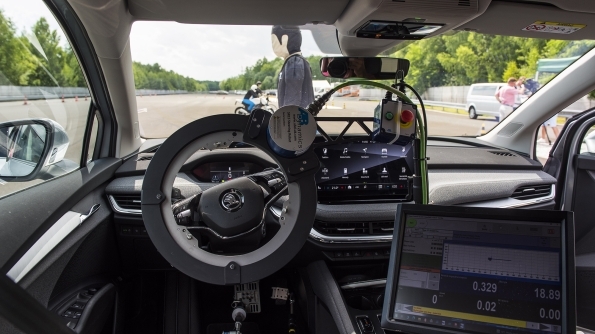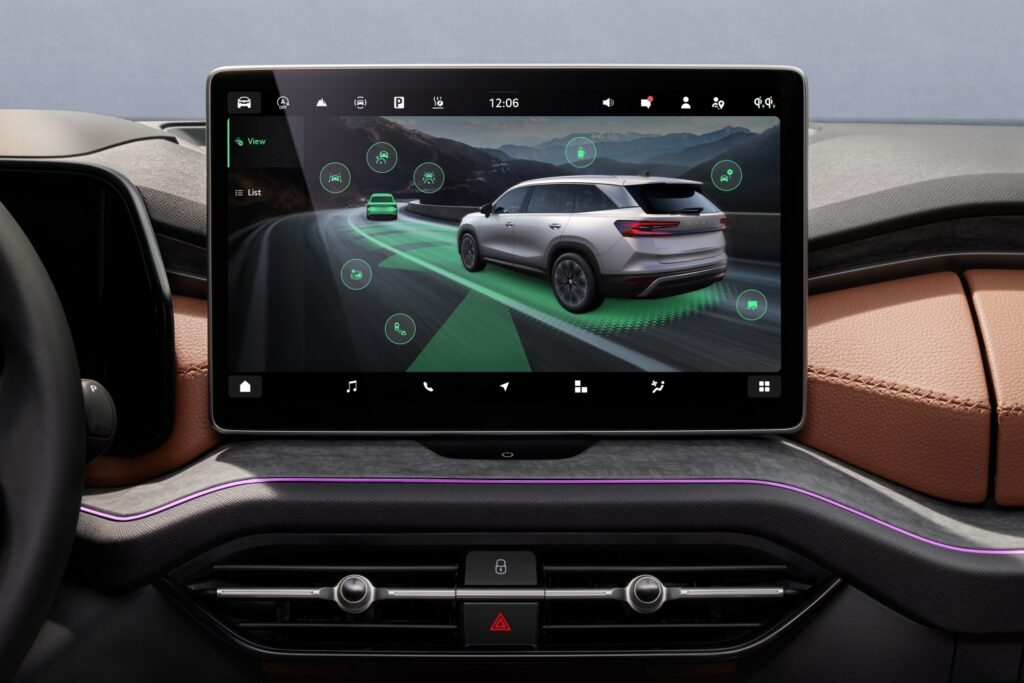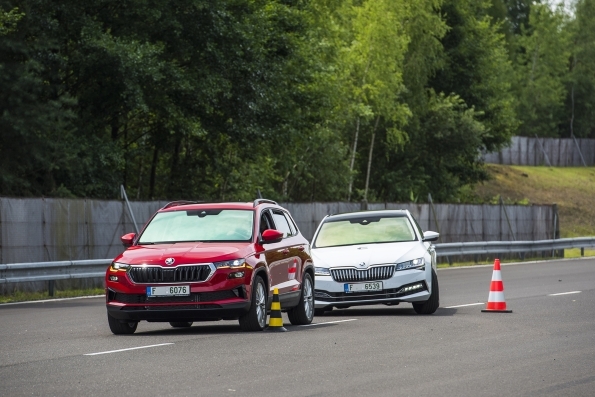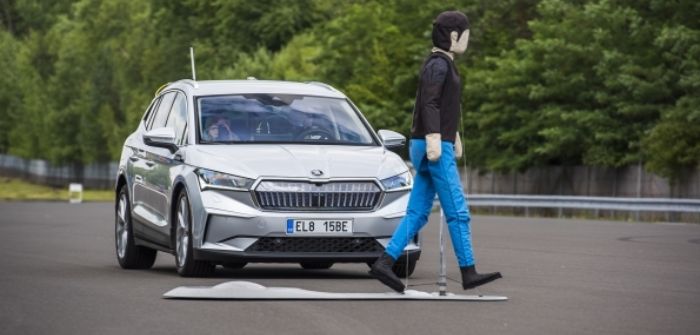The Polygon test center in Úhelnice, Czech Republic, is home to Škoda’s advanced safety technology development program and is used by the auto maker to develop its latest active safety technologies. These meet its own stringent safety tests as well as those set by Euro NCAP, contributing to a five-star rating across the whole Škoda range.
The 2023 Euro NCAP testing protocol places a greater emphasis on a vehicle’s ability to prevent an accident or minimize damage caused by an accident, which underscores the importance of active safety features.
Features such as Front Assist, Lane Assist, Crew Protect Assist and Emergency Assist, as well as all new systems, can be tested in a safe and controlled environment at the Polygon. Updated systems can also be developed further, ensuring result accuracy and consistent test parameters.
Front Assist is a collision-alert safety system that monitors the situation ahead with radar. Faced with a collision, it applies the brakes, preventing the car from hitting the obstacle ahead entirely or minimizing the damage if a crash is unavoidable.
In order to develop Front Assist, Škoda safety engineers use a suite of technologies and equipment at the Polygon, including inflatable, remote-controlled pedestrians, bikes and cars. Along with robotics systems installed in the test Škoda itself, the speed and course of the car and the obstacles can be pre-programmed, ensuring every test is identical and enabling the engineers to tweak the safety technology for maximum effect.
 The advanced technology can work a speed differential of up to 60km/h, and is standard across the entire Škoda range, from the Fabia to the Superb and all-electric Enyaq iV.
The advanced technology can work a speed differential of up to 60km/h, and is standard across the entire Škoda range, from the Fabia to the Superb and all-electric Enyaq iV.
Crew Protect Assist can also be tested using the inflatable and remote-controlled obstacles. The system, which is available across the Scala, Kamiq, Karoq, Kodiaq, Superb and Enyaq ranges, pre-tensions seatbelts, closes the car’s windows leaving a 5.5cm gap, and closes any sunroof completely.
 With a test driver behind the wheel, engineers can program and develop features that help motorists in the event they steer aggressively away from a potential obstruction. Should a driver swerve, the car uses systems like Lane Assist to assess the car’s surroundings – whether it’s a gravel or grass roadside, a white or yellow line, or another car. It can then help the driver steer, adjusting the rate of turn at the car’s wheels.
With a test driver behind the wheel, engineers can program and develop features that help motorists in the event they steer aggressively away from a potential obstruction. Should a driver swerve, the car uses systems like Lane Assist to assess the car’s surroundings – whether it’s a gravel or grass roadside, a white or yellow line, or another car. It can then help the driver steer, adjusting the rate of turn at the car’s wheels.
Developing a new safety feature can take years, with hardware and software simulations and then physical tests, and up to 50% of that time taken up with validation. Emergency Assist brings the car to a gentle and controlled stop with the hazard warning lights on and the horn sounding intermittently if the driver is deemed to have been inactive for 25 seconds. Škoda engineers working on such a system will test various onboard camera or radar positions, for example, ensuring maximum coverage.
 According to Škoda, its commitment to safety at the Polygon can be seen in the all-new Škoda Kodiaq, which features new and improved assistance systems for maximum protection, including Turn Assist, which helps prevent accidents when turning at junctions.
According to Škoda, its commitment to safety at the Polygon can be seen in the all-new Škoda Kodiaq, which features new and improved assistance systems for maximum protection, including Turn Assist, which helps prevent accidents when turning at junctions.


